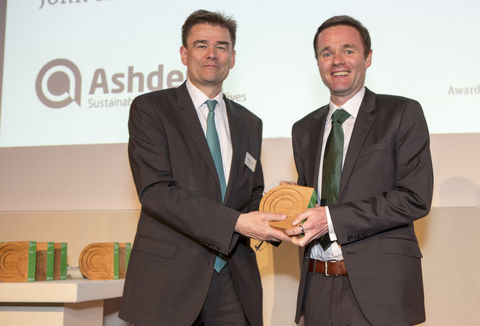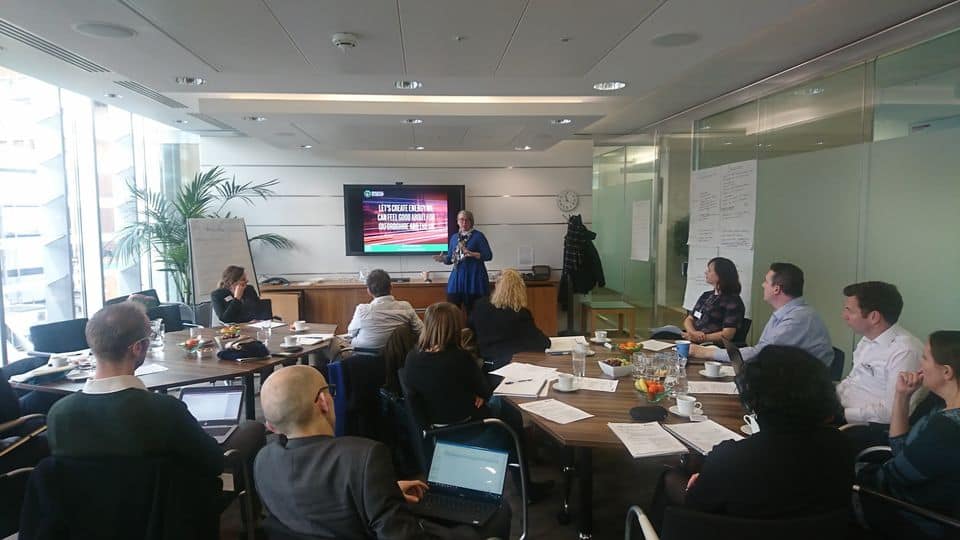Challenges can feel overwhelming
The cities in our network have ambitious environmental goals, but delivering on them is an ongoing challenge now that the first flush of putting plans in place has passed. The impact of an acute lack of resources in local and combined authorities, high risk aversion, a dearth of financing options and shifting policy came through strongly as attendees shared their current areas of focus and challenge.
Two other key challenges stood out. Most cities have come to see energy as an accepted, if not integral, part of their agenda, given the need to accommodate EVs and growing renewables. But a meaningful approach to sustainability is much broader and many sustainability leads are pressing against the limits of what their leadership sees as necessary activities.
And even mayors engaged with the environmental agenda present a constant challenge to their staff. What can they deliver that will be tangible and make a difference to the lives of citizens? In short, what will make the environmental aspect of their mayoral offer voteworthy? A fair question from politicians facing elections next year, but strategic plans are longer term and their impacts aren’t immediately obvious to the electorate. So how do you square planting veg gardens in stations to show visible progress with the slower and complex work of building a foundation for a low carbon economy?
Are co-benefits an answer?
The emerging answer is leveraging the power of the wider benefits of improving sustainability to help make the case for it, something that Ashden and others, such as the Grantham Institute at Imperial, are working on. Known as ‘co-benefits’, highlighting the links between e.g. energy efficiency retrofit of homes, reduced illness and burden on the NHS can make the benefits of the sustainability agenda instantly more tangible and related to issues that citizens care about. Linking up policy areas and their budgets, getting more for the same money, is also a simple way for politicians to demonstrate value for their city.
Ashden winners like SHINE are great examples of this kind of approach, getting doctors to refer patients for energy efficiency upgrades, instead of repeatedly sending ill people back to the cold, damp homes that were causing and prolonging their illnesses.

Ashden Award for Reducing Fuel Poverty
SHINE
Read more
Decision makers need numbers not anecdotes, so gathering evidence is both essential and powerful. Being able to compare the relationship of housing stock quality to NHS cost enabled one attendee to engage a new set of colleagues in tackling fuel poverty. And being able to explore the NHS costs of varying levels of ambition on air quality could drive stronger commitment. When Oxfordshire commissioned a low carbon economy report it found that the employment numbers were twice the amount of the BMW plant, which is a historic fixation for local politicians due to its jobs. And their low carbon economy generates the same income that the area spends on energy. This wider look at the low carbon economy and related jobs and skills enabled politicians from all parties and interests to work together, another strength of a co-benefits approach.
And this isn’t radical. Local authorities already invest to avoid cost, for example making transport improvements to avoid the economic costs of congestion. Some are looking to apply this approach to environmental policy. For example, not just exploring what is needed to meet legal requirements on air quality, but understanding the value of it in avoidance of poor health outcomes, strengthening the case for action and greater ambition. Others are exploring new funding models via a lateral approach, asking who benefits when concrete is turned back into green space, for example. If it’s water companies, could they fund some of the activity? As more local and combined authorities explore these approaches sharing their learning will be invaluable.
Difficult dynamics
The meeting was joined by Tim Charters, consumer and supply chain lead from BEIS, offering a chance to reflect on the interaction between national policy and local action. There was a sense of mismatch, with headline government targets on the built environment and retrofit not very ambitious and lacking in the policy infrastructure to make them achievable, such as the cancelled zero carbon homes standard which had been driving significant progress.
Now, with only building regulations as their guide, many local authority leaders don’t see why they should go further. In straightened times this is understandable but makes the need for clear leadership and ambition from central government all the more essential. Some cities are planning to go further faster than central government on climate and the built environment, begging the question posed by one of our attendees “why is government not supporting the best of what is happening in the UK, not the mediocre?”

Read more
Making the most of local potential
When it comes to energy efficiency there was also a sense that the potential for local governments, and now also the city region scale, to help was being underutilised. Attendees made the points that local authorities can act as trusted intermediaries in delivering energy efficiency and in helping to build the local supply chain. This has been almost mortally wounded by policy changes and attendees didn’t feel that national level initiatives and the involvement of large suppliers would help citizens see energy efficiency as relevant or something on which they could get advice and referrals they could trust.
Local areas are keen to help deliver energy efficiency, as they are acutely aware of the misery that fuel poverty can inflict and the small dent they are currently able to make. But there has to be a more open and flexible dialogue in place about how the centre can bolster regional effort and enable more flexible access to funding, as well as clear leadership from the centre that they can point to.
Looking ahead
Our network is never one to get disheartened, and although there was frustration, they appreciated the chance for an open discussion with BEIS. Cities face innumerable challenges in realising their liveable city ambitions but, as every city region network meeting reminds me, it never stops them. Our next meeting will focus on a perennial challenge – how do you fund environmental projects? Financiers say the money is ready and waiting once cities get a project portfolio in place. Those on the ground know it’s not that simple and we’ll be looking at that in depth in May.

